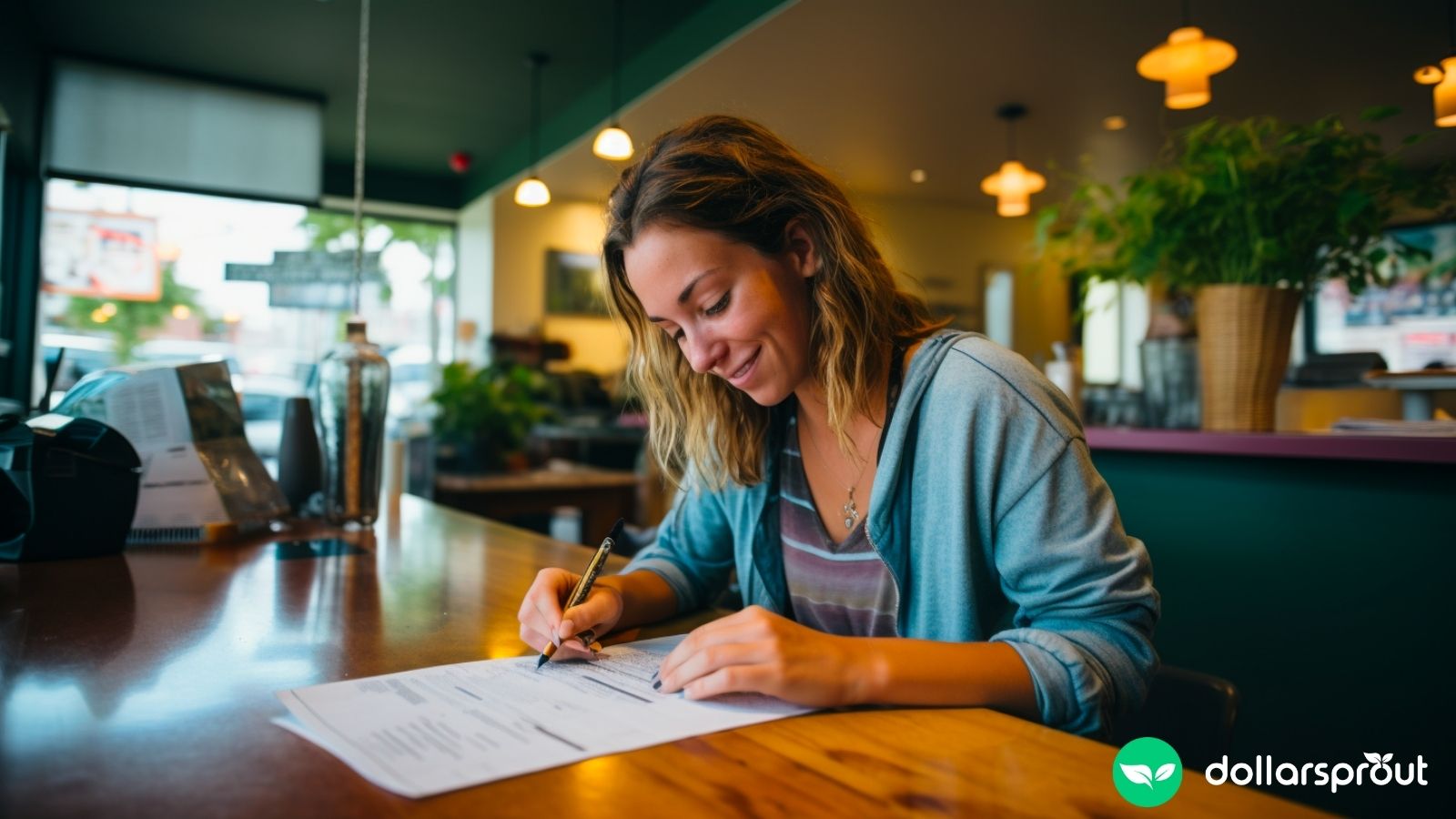How to Fill Out a Money Order (Step-by-Step Guide)
Our readers always come first
The content on DollarSprout includes links to our advertising partners. When you read our content and click on one of our partners’ links, and then decide to complete an offer — whether it’s downloading an app, opening an account, or some other action — we may earn a commission from that advertiser, at no extra cost to you.
Our ultimate goal is to educate and inform, not lure you into signing up for certain offers. Compensation from our partners may impact what products we cover and where they appear on the site, but does not have any impact on the objectivity of our reviews or advice.
There are times when a plastic card or paper cash isn't enough. For instance, if you need to mail a significant sum of money or send a secure payment. For anyone in situations like these, a money order is the solution.

Some of the links on DollarSprout point to products or services from partners we trust. If you choose to make a purchase through one, we may earn a commission, which supports the ongoing maintenance and improvement of our site at no additional cost to you. Learn more.
Learning how to fill out a money order is essential to completing important money moves when a checkbook is no longer an option for you.
These days, checkbooks have largely gone the way of the dinosaur. Some people still keep one around for old times’ sake — or for budgeting reasons. But for the most part, they’ve been almost entirely replaced by debit and credit cards.
For anyone who remembers the slog of balancing a physical checkbook, this isn’t such a bad thing.
But there are times when a plastic card or paper cash just won’t do. For instance, say you need to mail a significant sum of money or send a secure payment. People without checking accounts also need a way to pay bills. For anyone in situations like these, a money order is the solution.
How to Fill Out a Money Order in 5 Simple Steps
Here’s a simple guide on how to fill out a money order and what to do with it after you’re done.

1. Add the recipient
Like filling out a check, you have to designate a specific recipient on each money order. Write the name of the person or organization to whom you’re sending money on the line that says some variation of “Pay to” or “Pay to the order of.”
The designated recipient must match the person or business’s legal name because the bank or post office cashing the money order will check their ID. Using a nickname or incorrect spelling may cause issues for the recipient when cashing their check.
2. Fill in the purchaser’s address
After writing the name of the recipient, add your residential address on the designated space. Some money order forms ask you to list the recipient’s address as well.
The address line is mostly a relic of the time before you could easily reach a purchaser or recipient by phone or email, so it’s not typically required. You can always ask the cashier if it’s acceptable to leave the address line blank.
3. Provide any additional information
Like checks, personal money orders have a line to write a note to the beneficiary.
If you’re sending a birthday check to your sister, write a memo like, “Happy 25th birthday.” If it’s a rent check to your landlord, write your apartment number. If you’re paying a bill, include your account number so the company can credit your account accordingly.
4. Sign your money order
Once you’ve filled out the money order, sign it and hand it to the cashier. You only have to endorse the front, as the recipient signs the back of a money order.
5. Keep your receipt
A receipt is proof that you sent the money order, which is handy if you’re paying rent or other bills. You can also use the receipt to cancel a money order, like if you find out you’ve been scammed. If a money order is lost, the receipt will help you recoup the money and purchase a new money order.
Always keep the receipt until you confirm the person has received and cashed the money order.
How to Send Your Money Order
Sending a money order is simple because there are so many places to do it. Chains like Western Union and MoneyGram are available at grocery stores, gas stations, drugstores, and convenience stores. The post office sends money orders as well.
Your bank or credit union may also provide money orders, often for free depending on your account. Talk to your bank first to see if this option is available.
If your bank is far away or doesn’t offer free money orders, you can choose a third party to send one. Deciding which company to choose depends on where you live and how much you want to spend, so do a little research to get the best rate.
The post office charges $1.25 for money orders of $500 or less and $1.75 for money orders between $500.01 and $1,000. Western Union charges $1.50 and Moneygram charges $.89.
Most personal money orders have an individual limit of $1,000, so you have to divide the amount into separate money orders to send more than that. If you’re paying rent with a money order, chances are you’ll have to do this.
You can pay for a money order with cash or a debit card. The money has to come out of a bank account because the issuing company has to verify that you have the funds.
If you try to pay for a money order with a credit card, the card company will count it as a cash advance and charge you a high interest rate.
Where to Cash a Money Order
There are a few options on where to cash a money order. First, look at the issuer. If it’s a Western Union money order, you can go to a Western Union location to cash it. If it’s a United States Post Office money order, you can go there.
Going directly to the issuer will usually cost less money than a different location, and it’s often free.
You can also deposit a money order directly into a checking or savings account at your bank or credit union. When doing this, you may not receive access to the full sum right away. The bank has to verify the legitimacy of the money order, which can take a few days to process.
When to Use a Money Order
Money orders might seem like an unnecessary hassle, but there are times when it’s actually better to use one instead of a check. If you’re sending money overseas, a money order is probably the least expensive and safest way to do so. The post office can send money orders to 28 different countries.
A money order is also more secure than a check because it doesn’t have any identifying information on it. Banks can identify it by the money order number rather than by your account number. A check will always have the account and routing number visible, which can be used to hack into your account. If you’re sending funds to someone you don’t know that well, a money order is a great way to add a layer of security to the payment.







